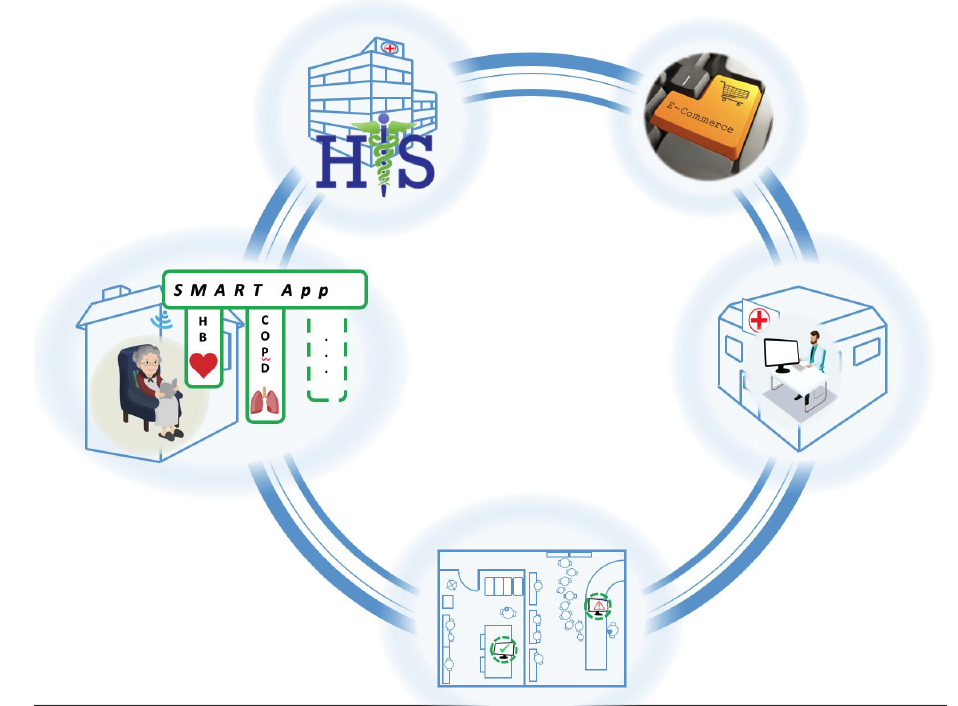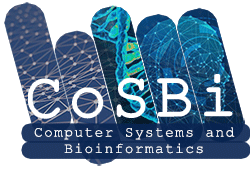ITA | ENG
We-ease-it integrates the latest IT technologies and Artificial Intelligence to create a new Hospital 4.0 service allowing intelligent and predictive telemonitoring of frail patients. The system will be validated with a one-year experimental study at the University Campus Bio-Medico Polyclinic on patients suffering from socially and clinically relevant diseases.
The project
The aging of the population undermines the long-term sustainability of existing models of healthcare in Europe, especially for frail and chronically ill patients who absorb a large part of healthcare resources. Also the Sars-cov-2 pandemic and Covid-19, the related respiratory disease, have confirmed this problem affecting especially the frail and elderly population that has been deprived of the necessary health support also due to the home isolation.

To solve these problems, the research program will develop and deploy a new model of hospital service that leverages information technologies to provide frail patients (e.g. chronic and oncological patients) with intelligent tele-monitoring functions, integrating data acquired during daily life with those present in the hospital information system. This will enable the development of Artificial Intelligence (AI) methodologies to perform data mining and to develop personalized predictive models of disease evolution. The platform will be based on an “M” paradigm that provides patients with a horizontal software, which represents the core of the platform, and several vertical sections that correspond to the specialties dedicated to the specific diseases of telecontrol, providing patient-centered healthcare services and processes.
We-ease-it objectives
- Realisation of a true 5P model of medicine (Preventive; Predictive; Personal; Participatory; Precise).
- Development of AI methodologies to generate personalized predictive models of disease evolution for patients with chronic obstructive pulmonary disease (COPD) and heart failure (HF) as case studies for chronic diseases, non-small-cell lung cancer (NSCLC) as a case of study for oncologic diseases.
- Identification of quantitative biomarkers that correlate with prognosis to develop prognostic and therapeutic models for both chronic and cancer patients.
- Improvment of quality of life and well-being through patient-centered healthcare services and processes.
Progress updates
We-ease-it started in June 2021 and will end in May 2024. Here a list of tasks and project advancements updates.
Meetings to launch the project – 100%
Management and reporting of the project and the work group – 50%
Communication with the host institution – 50%
Analysis of stakeholder requirements – 100%
System requirements: definition of the architecture of the system and the requirements of the components – 100%
Qualification strategy – 60%
KPI definition – 100%
Hardware acquisition – 80%
Hardware tuning for software integration – 60%
In vitro testing with simulators and volunteers – 30%
“M-shaped” platform: development of the horizontal section – 20%
“M-shaped” platform: vertical tract development module for COPD monitoring – 70%
“M-shaped” platform: vertical tract development module for monitoring heart failure monitoring – 30%
“M-shaped” platform: vertical tract development module for monitoring the oncology patient with lung neoplasm – 30%
Privacy and security – 30%
Development of front-end software platform for the caregiver – 50%
System integration and Proof of Concept – 10%
Protocol preparation and ethics committee approval – 80%
Enrollment of patients and professionals – 10%
Education, training, and end-user empowerment
Clinical Studies
Experimental Data Analysis
Integration of telemonitoring platform data with HIS data
Data mining – 10%
Expicability (XAI)
Integration of AI methods in the platform
Ethical and moral analysis of technology use and impact on patients
Digital ethics analysis
Economic and organizational analysis of the use and impact of technology on the University Polyclinic
Identification of paths of improvement and modularization of ICT infrastructure
General, non-scientific communication, including end users and decision makers – 50%
Interdisciplinary events and publications – 40%
Development of the medical-economic model 4.0
Business Plan definition
